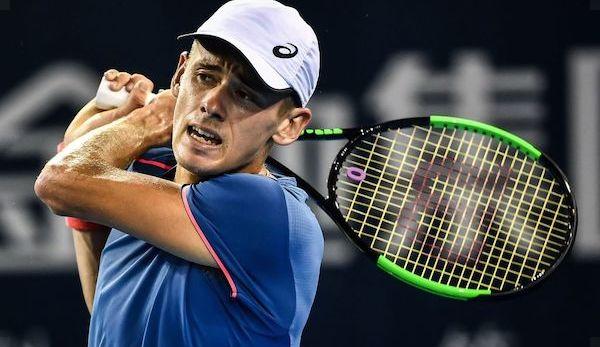Are you sometimes surprised that your opponents play back your fast balls even faster and better? Do you feel helpless at times when even your hardest forehand comes back twice as fast?
These game situations have their origin in two different types of players that you will find on almost every tennis facility in the world. If you want to read and understand the game of your opponents better, then read on now.
Alex Antonitsch is a fan of him. He has already made life difficult for some players on the pitch. He is the prime example of a counter puncher, a player who loves to juggle with the speed of the opponent’s shots: Alex de Minaur, a skinny guy from Australia, is a guy who takes your hardest forehand, wraps it in wrapping paper and sends you back a bitterly evil gift.
These player types like to stand a bit further behind the baseline, but not in the fence like Rafael Nadal at the return. They like to give their opponents food, soft balls, not played too short. If the opponent accelerates during the rally, the great strength of the counter punchers begins to unfold. Especially from the barrel, you can keep up almost effortlessly with any speed without making any mistakes. Fast balls play them back faster. They are nimble on their feet, almost always on time and have their greatest moments when the opponent unpacks his hardest shots.
But they have difficulties when they are fed themselves. If they have to determine the pace of the rallies themselves. The typical counter-puncher is a genius at making fast balls even faster. But he fails to play slow balls fast himself.
If he can play the ball from a standing position, the point is as good as over. Any ball that is too short and too soft in the half field will be penalized. The combination of serve and forehand is his greatest weapon. A high odds on the first serve is synonymous with many easily won serve games, as he can use his forehand directly and effectively based on this serve. The robot knows no mercy. Karen Khachanov is an ideal example for a player who, once on the offensive, can hardly be stopped. Once you are in the mill of a robot, it will be difficult for you to find the exit again.
But the robot doesn’t like being moved at all. If he has to play from the run or his opponents pull him with a short and flat slice from the comfort zone. Balls below the net edge are difficult to process. If it is played quickly and precisely, it can hardly get out of its own defensive.
The next time you face an unknown opponent on the court, try to draw a picture of him. Every drawing has contours. Think about which category you would put your opponent in, what contours this opponent has. You have the simplest playful methods at your disposal: play deliberately shorter and softer games and observe how your opponent reacts to these game situations. Slight mistakes creep in? Does he have trouble playing slow balls fast?
On the other hand, you can react immediately when your opponent plays your fast balls effortlessly from the barrel back into the corner. More speed would mean more trouble for you. You can directly change the tactical direction of your game and follow your opponent’s game.
With the right drawing of your opponent you will find the best tactical means to success.














You must be logged in to post a comment Login